
This is our full review of the new Amazfit GTR 4 and GTS 4. So in case you haven’t noticed, it’s absolutely raining smartwatches these days! Samsung kicked things off with the Galaxy Watch 5 and Watch 5 Pro a few months ago, both of which introduce iterative upgrades over last year’s Galaxy Watch 4 series. Fitbit then announced a trio of premium smartwatches (Versa 4, Sense 2) and fitness trackers (Inspire 3) after two long years of hiatus, whereas Apple really wowed the wearable crowd with the USD 800 Apple Watch Ultra along with the second-gen Watch SE and the Watch Series 8.
And Google has finally unveiled the long-awaited Pixel Watch as well, combining the health and fitness tracking power of Fitbit and the updated Wear OS platform.
So if you’re in the market for a new smartwatch, there hasn’t been a better time than right now. In the middle of all this, Amazfit also launched the GTR 4 and GTS 4 smartwatches for USD 200, which bring some welcome upgrades over their predecessors. But unlike the rest of the competition, I haven’t seen many people talk about these new Amazfit watches as much—despite their impressive feature set. Especially in terms of their fitness-tracking abilities and battery life.
Anyway, my team and I have been testing both of these smartwatches for over a week now. And in this review, I’ll be discussing all our experiences with the Amazfit GTR 4 and GTS 4, including what we like about them and what we don’t.
Amazfit GTR 4, GTS 4 Review: Specifications
| GTR 4 | GTS 4 | ||
| Case Material | Aluminum alloy frame, polycarbonate bottom shell | ||
| Strap Style | 22mm universal (fluoroelastomer, leather, nylon) | 20mm universal (fluoroelastomer, nylon) | |
| Color Options | Superspeed Black, Vintage Brown, Racetrack Grey | Infinite Black, Misty White, Autumn Brown, Rosebud Pink | |
| Dimensions | 46 x 46 x 10.6 mm | 42.7 x 36.5 x 9.9 mm | |
| Weight | 34 gm (with strap) | 27 gm (with strap) | |
| Display | 1.43” (466 x 466 px), 326 PPI | 1.75″ (390 x 450 px), 341 PPI | |
| Protection | Tempered glass, Anti-fingerprint coating | ||
| Properties | AMOLED panel, Always on Display (AoD) | ||
| Processor | Unspecified | ||
| Memory | Unspecified | ||
| Battery | 475mAh (Up to 14 days*) | 300mAh (Up to 8 days*) | |
| Charging | Magnetic charging | ||
| OS | Zepp OS 2.0 | ||
| Sensors | BioTracker 4.0 PPG biometric (blood oxygen, 4PD + 2LED), Acceleration, Ambient light, Barometer, Geomagnetic, Gyroscope | ||
| Health Tracking | 24/7 heart rate, stress, SpO2 monitoring, sleep tracking, PAI assessment, one-tap measurement, menstrual cycle tracking | ||
| Sports Modes | 150+ exercise modes, 8 smart recognition (ExerSense) | ||
| Connectivity | Bluetooth 5.0 (BLE), WiFi 2.4GHz | ||
| Navigation | Dual-band circularly-polarized GPS antenna, 6 system positioning | ||
| Bluetooth Calls | Yes (built-in microphone, speaker) | ||
| Durability | 5 ATM water-resistant | ||
| Compatibility | Android 7.0 and above, or iOS 12.0 and above | ||
| Companion App | Zepp (Android | iOS) | ||
| Price in Nepal | Rs. 31,000 (Buy here) | Rs. 31,000 (Buy here) | |
Amazfit GTR 4, GTS 4 Review:
Design and Build
- Aluminum alloy frame, polycarbonate back
- 20mm (GTS 4), 22mm (GTR 4) strap
- 5 ATM water-resistant
As always, allow me to kick things off with the design side of things. One thing I’ve always admired about Amazfit’s premium smartwatch lineup is that you get to pick between a circle (GTR) or a squared-edge (GTS) look without sacrificing any critical feature between the two. Except for battery life maybe, but that’s purely a limitation of their physical attributes, so it’s all good.
On the contrary, an Apple Watch sticks you with a square design whether you like it or not, while Samsung’s Galaxy Watches are only available on a circular dial.
Another thing I like about their design is also how clean they look. So, I can wear it to formal events or informal gatherings without the watch drawing any sort of unwanted attention. I’ve got both of them with this really cool nylon strap, but you can also find them with regular silicone—or even a leather option for the GTR 4. And since Amazfit uses a universal strap approach on its wearables, you can swap it out with any of your existing or other third-party watch straps too.
20mm for the GTS 4 and 22mm for the GTR 4.
Okay, while these nylon straps are plenty lightweight and comfortable, they are relatively more water-absorbent compared to traditional rubber straps. So if you’re someone who swims every now and then or just sweats a lot during workouts, you might want to go with other strap options instead. Not that exposure to water or sweat is gonna damage the strap or anything, but it’s just that you’ll end up having to wash it way more often.
I think the Racetrack Grey GTR 4 looks ugly
And this grey-red color mix on the GTR 4’s strap isn’t doing it for me either. Although the golden-brown theme on the GTS 4 looks quite attractive—and frankly a bit luxurious as well—I think this sporty look of the Amazfit GTR 4 is a big swing and a miss. But hey, looks are subjective anyway so if you like it, that’s great!
For navigation, there’s a familiar rotating crown on the right frame whereas the GTR 4 has an additional button right below it that can be customized to open any app you’d like. It launches the workout app by default and I’ve kept it as is. If you recall, last year’s GTR 3 had a circular button on both ends but Amazfit has switched things up this time—for better or worse. I feel like it looks a bit asymmetrical, to be honest.
Display
- GTR 4: 1.43″, GTS 4: 1.75″ AMOLED panel
- Circular/Squarish dial, Always on Display
- Tempered glass, anti-fingerprint coating
Okay, moving on to the display, the Amazfit GTS 4 stays true to its predecessor in every way possible. From the display size to resolution, pixel density, brightness level, and everything else. All this is to say that this AMOLED screen is undoubtedly a pleasure to look at.
You don’t need to worry about outdoor visibility on these smartwatches either because they can get bright enough to accommodate you through harsh sunny outdoors. Or dim enough to not pierce your eyes when it gets dark. I also like how its automatic brightness adjustment is quick enough to adjust to bright ambient conditions, even though it’s a bit slow the other way around.
But unlike the GTS 4, the GTR 4 introduces quite a few changes in the display department. Once again, for better or worse. While the GTR 3 had this seamless, sorta flowy display, Amazfit has doubled down on the adventurous, outdoorsy look here by raising the screen above the bezels. It does appear somewhat tougher—sure—but I think would’ve made more sense if it also had a Gorilla Glass or sapphire glass protection instead of simple tempered glass.
Personalizing the display
Besides the revamped physical layout, the GTR 4 enjoys a slightly larger screen real estate too. 1.43” versus 1.39” on its predecessor. And when it comes to customizing the display, these Amazfit smartwatches let you choose from multiple color profiles, icon packs, and watch faces.
There’s no way to install watch faces from Play Store here like on Wear OS-powered smartwatches, but I gotta say that Amazfit’s selection of watch faces is pretty neat in itself. Including some animated, some customizable, and even some interactive options—like this fishing one. It requires your constant attention (which gets old pretty fast), but if you’ve got some time to kill and have nothing else at your disposal except your watch, this can be a mini-game of sorts.
Software
- Zepp OS 2.0 (from Amazfit)
Or better yet, you can actually install apps and games from Amazfit’s own App Store. Yep, the upgraded Zepp OS 2.0 platform on these smartwatches is loaded with a lot more mini-apps and games compared to the first iteration of Zepp OS on the GTR 3 and GTS 3. But I guess I was expecting this app ecosystem to grow a lot bigger in the span of this one year because the number of third-party apps here is still pretty limited.
I also recall seeing Spotify support on Zepp OS on an official Amazfit listing, but that’s nowhere to be seen. A quick Google search directs me to a Reddit thread, which reveals that Amazfit is apparently willing to bring the app onto its platform; but it’s actually Spotify that’s keeping it all from happening. So instead, I have to load mp3 files onto the watch like a caveman to be able to stream some music here. At least the “Notify for Maps” app is somewhat useful considering there’s no Google Maps for Amazfit watches.
Super-smooth performance
On the other hand, I’m really fond of how fluid its UI/UX is. From all the animations to touch responsiveness, everything feels snappy here. And getting around this UI is pretty simple as well. You can customize all the app tiles that appear on the sides, whereas the notifications and the control center are laid out at the bottom and top portions, respectively.
Talking about notifications, they’re not actionable like on Wear OS smartwatches, but Amazfit lets you send quick replies on a few apps like Messenger. And on multiple occasions, I’ve received app notifications way too late here.
I had the same issue with last year’s Amazfit watches too, so seeing the same flaws repeat yet again is rather frustrating. The inconsistency in font style and strength throughout the UI is also pretty dull. It’s seemingly different depending on what screen you’re on. This might easily be the nerdiest nitpick I’ve talked about so far but it’s something I wish Amazfit would work on.
Health, Fitness Tracking
- 150+ workout modes
- With automatic detection for 8 of them
- 24/7 heart rate, stress, SpO2 monitoring
- Sleep, menstrual cycle tracking, one-tap measurement
- BioTracker 4.0 PPG biometric sensor
With that out of the way, let’s now get into the health and fitness tracking features of the GTR 4 and the GTS 4. I’ve already been a fan of Amazfit’s health monitoring abilities on its previous smartwatches and these guys take it a step further with the new suite of features and the new BioTracker 4.0 PPG sensor.
According to Amazfit, it takes 33% more data than the last-gen BioTracker sensor for more accurate heart rate, stress, and blood-oxygen readings. And yeah, I am indeed getting better SpO2 readings here compared to how the GTR 3 and GTS 3 scared me a couple of times with dangerously low blood oxygen measurements.
Other than this, these watches are pretty reliable at logging your steps and heart-rate levels too. Amazfit says it has also updated sleep tracking this time but based on my experience, they still fail to record my awake time every now and then.
Not that it’s a routine occurrence or anything but there have been a couple of instances where I abruptly got up in the middle of the night, and that record is missing completely. But when it comes to logging my time to bed and the time I get up, these watches have been spot on all the time. To help develop good sleeping habits, I can also create a sleep schedule now; with the watch helping me follow through via notifications, smart alarms, and other insights inside the app. That’s pretty neat!
Deeper insights into your sleep cycles
Furthermore, Amazfit’s sleep tracking now includes breathing rate as well—alongside light, deep, REM sleep stages, and sleep breathing quality.
While the latter is basically a measure of your SpO2 level throughout the night, sleep breathing or respiratory rate determines how many times you breathe per minute when you’re asleep. Its normal benchmark for adults is 12 – 16 breaths per minute and according to these watches, my average respiration rate is right in the middle. All this sounds pretty great but I would’ve still liked to see a skin temperature sensor here for even more nuanced sleep tracking.
Amazfit’s one-click monitoring is yet another feature that’s worth discussing.
Instead of having to individually measure different health metrics, it can take your heart rate, SpO2, stress, and breathing rate records with just one tap. I do wish the watch would log all this data somewhere because as things stand, there’s no way to view previous measurements for future reference.
So. many. fitness tracking options
Anyway, there’s a lot to love about the fitness tracking capacity of these GTR and GTS duo. You can track over 150 different sports modes, whereas the watch can detect 8 of them by itself. And if you’re someone who likes to tinker with precisely how long, how intense, or how relaxed a workout should be, I’m sure you’re gonna love all the options Amazfit has thrown in here.
I’m not a fitness freak by any means but its interval training feature might just persuade me to be one. With this, I can customize my running, cycling, and a couple of other workouts with warp-up and warm-down sessions—along with how long I’d like to train and how long I’d like to rest. I think this could be the perfect tool for someone looking to build an exercise regimen.
And Amazfit’s goal-based PAI (Personal Activity Intelligence) metric should also motivate you to exercise more. It essentially rewards you with daily points based on how active you were throughout the day. Kinda similar to Active Zone Minutes on Fitbit smartwatches. I would’ve also liked to compare its real-time navigation feature by importing route files against the Galaxy Watch 5 Pro, but at the time of writing this review, Amazfit is yet to enable it via an OTA update on both GTR 4 and GTS 4. Same goes for “Fall Detection”.
GPS navigation is pretty great
I am pretty impressed with its GPS tracking though. It is still off by a certain margin even when setting the accuracy to the best level—which could be due to the congested streets of Kathmandu—but it can latch on to a GPS signal quite fast and the recorded workout trail is perfectly serviceable as well.
Likewise, your health stats sync with the Zepp app, which plays nice with both Android and iOS devices. And I also like how everything is well-organized and easy to read.
Battery
- GTR 4: 475mAh, GTS 4: 300mAh
- Magnetic wireless charging
Now, the battery life situation on the Amazfit GTR 4 and GTS 4 is pretty interesting. Both of them are fueled by notably larger batteries, but their claimed and actual endurance is actually lower than what their predecessor managed. This is likely because of the new BioTracker 4.0 sensor that takes your heart-rate readings much more frequently and all the other feature upgrades.
| GTR 4 | GTR 3 | GTS 4 | GTS 3 | |
| Battery | 475mAh | 450mAh | 300mAh | 250mAh |
| Typical usage (claimed) | 14 days | 21 days | 8 days | 12 days |
| Heavy usage (claimed) | 7 days | 10 days | 4 days | 6 days |
Still, the Amazfit GTR 4 and GTS 4 lasted me for like 7 and 4 days on average under my relatively rigorous usage. That’s more than I can say for a Wear OS or an Apple Watch! My usage pattern typically includes turning on all continuous health monitoring options, using GPS for a couple of hours, and making a few calls every once in a while. Yes, you can make or accept Bluetooth phone calls directly via the watch this time. Something I sorely missed on the last-gen Amazfit watches.
Just average call quality
As for the call quality itself, it’s fine for casual phone calls. The audio coming out of the onboard speaker is a bit sharper than I’d like, but it’s no biggie. And when you need to charge them, the GTS 4 takes about an hour and 15 minutes to go from 1 to 100%; or roughly 2 hours for the GTR 4.
Amazfit GTR 4, GTS 4 Review: Conclusion
So there you have it, our full review of the new Amazfit GTR 4 and GTS 4. As I’ve discussed all through this review, the GTR and GTS 4 offer a healthy blend of a classy design, a nice display, great battery life, and a bunch of health and fitness tracking features. All at a relatively affordable price compared to what other brands charge for their premium wearables.
So if all these stuff are something you prioritize when shopping for a new smartwatch, then I’m sure you’re gonna love either of them. But as I mentioned in the very beginning, the wearable market is flooded with incredibly impressive smartwatches right now. And the biggest competition to these Amazfit watches is definitely the new Fitbit Versa 4.
| Price in Nepal | Price in the US | Price in India | |
| Fitbit Versa 4 | N/A | USD 230 | INR 20,499 |
| Amazfit GTR 4, GTS 4 | NPR 31,000 | USD 200 | INR 16,999 |
For just a couple of bucks more, it offers advanced health and fitness tracking features and equally formidable battery life. I don’t mean to downplay the ability of these Amazfit watches to track your everyday health and exercises or anything, but Fitbit is your best bet if you’re serious about activity tracking. On the other hand, if you want a more versatile, Wear OS-powered smartwatch that can install apps from the Play Store and such, then you can find last year’s Galaxy Watch 4 series at some amazing deals right now.
Amazfit GTR 4, GTS 4 Review: Pros & Cons
Pros:
- Comfortable, lightweight design
- Great AMOLED display
- Zepp OS 2.0 is a lot more powerful
- Decent health, fitness monitoring features
- Nice battery backup
- Works with both Android and iOS devices
Cons:
- Occasional notification sync-up issue
- Sleep tracking needs some work
- Zepp OS not as capable as Wear OS
- Some features unavailable at launch







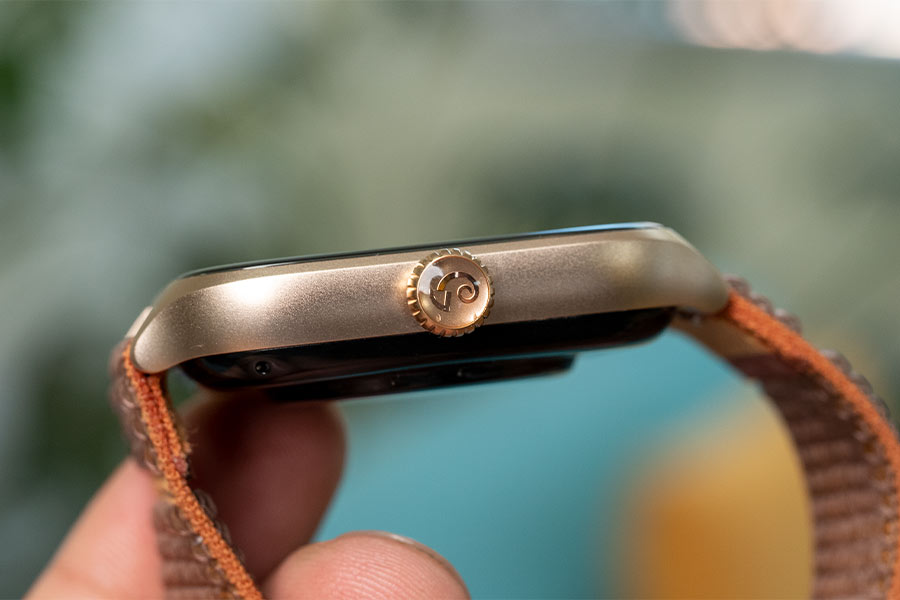
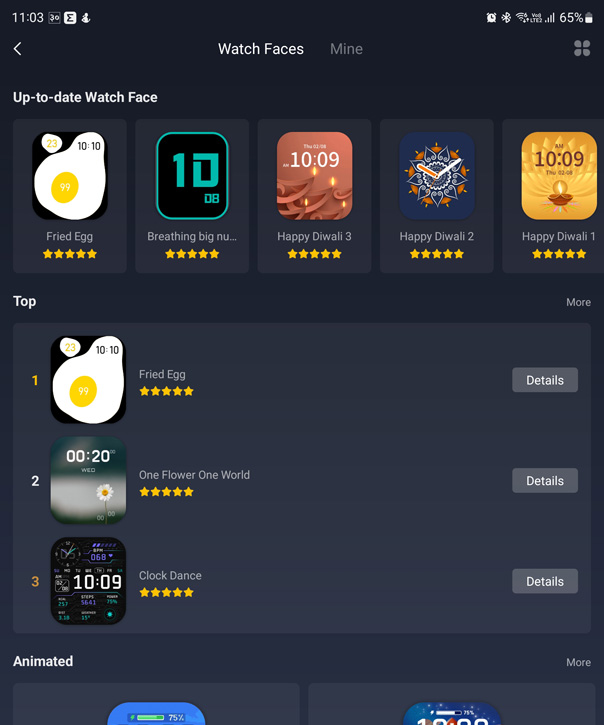
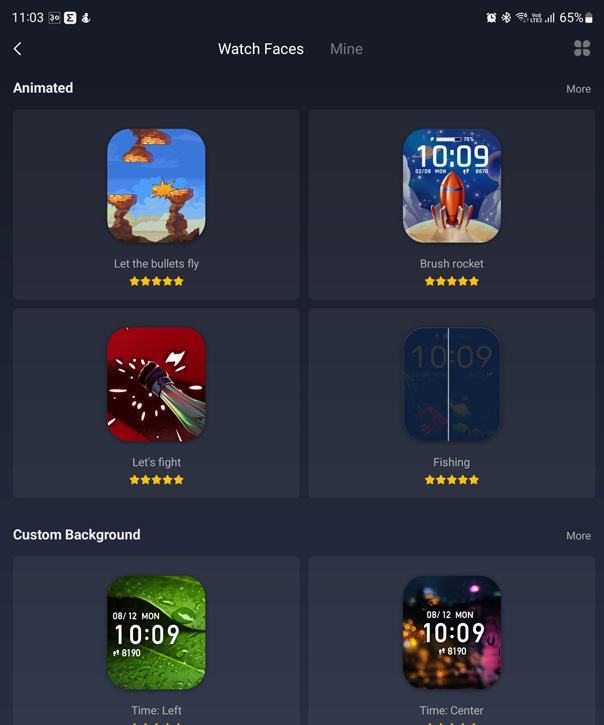
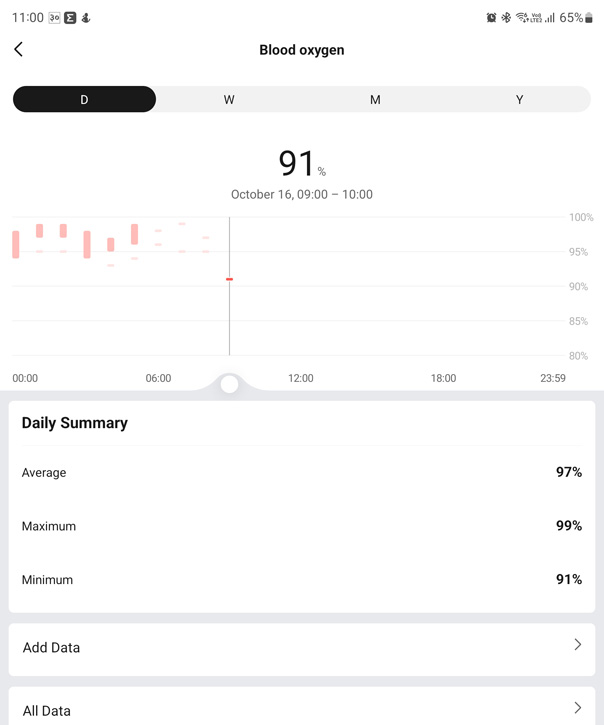
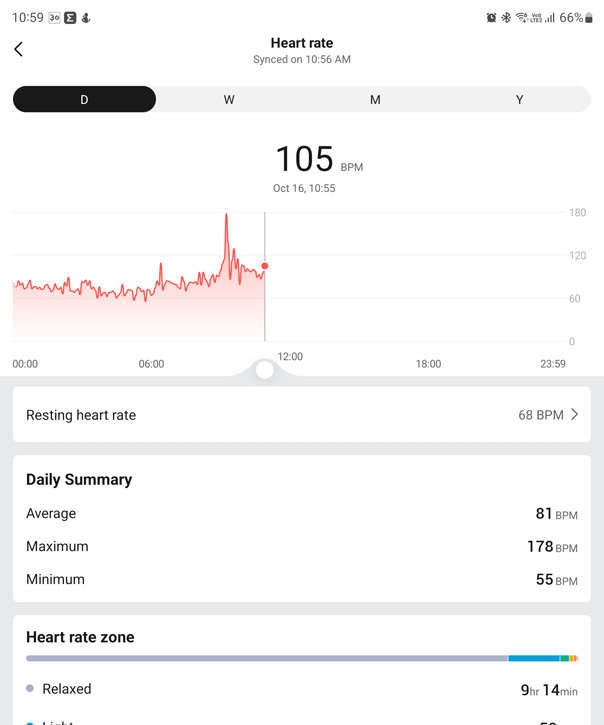
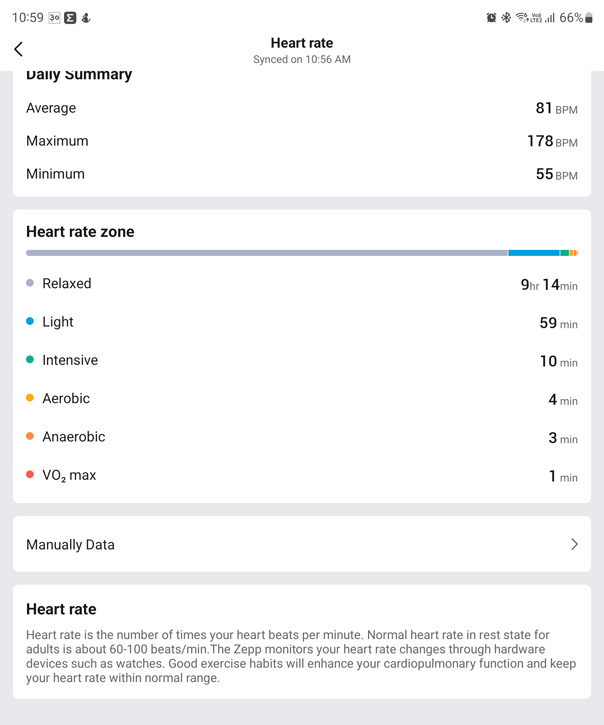

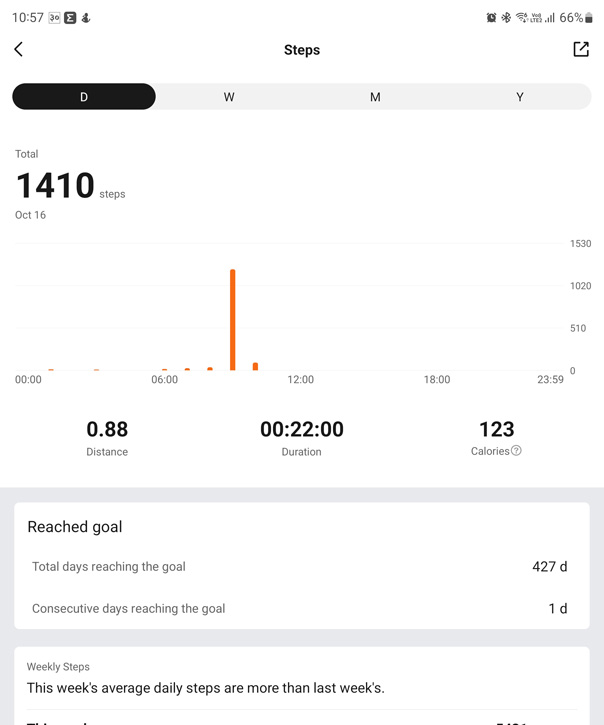
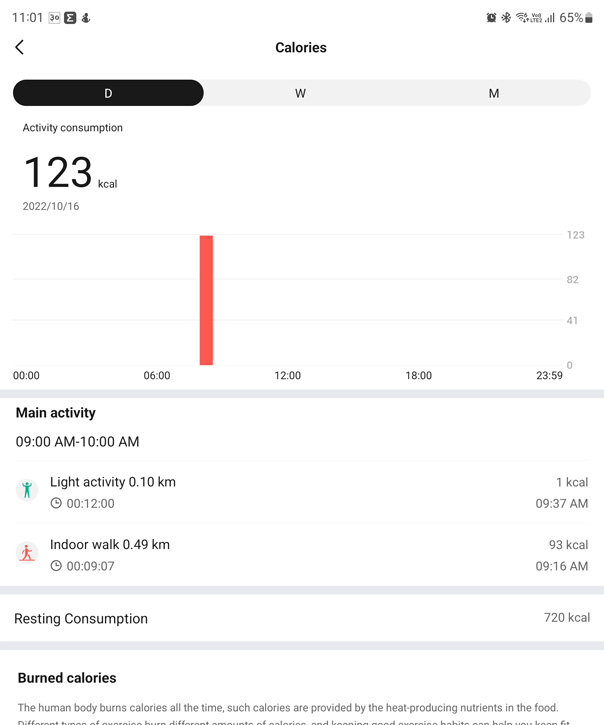
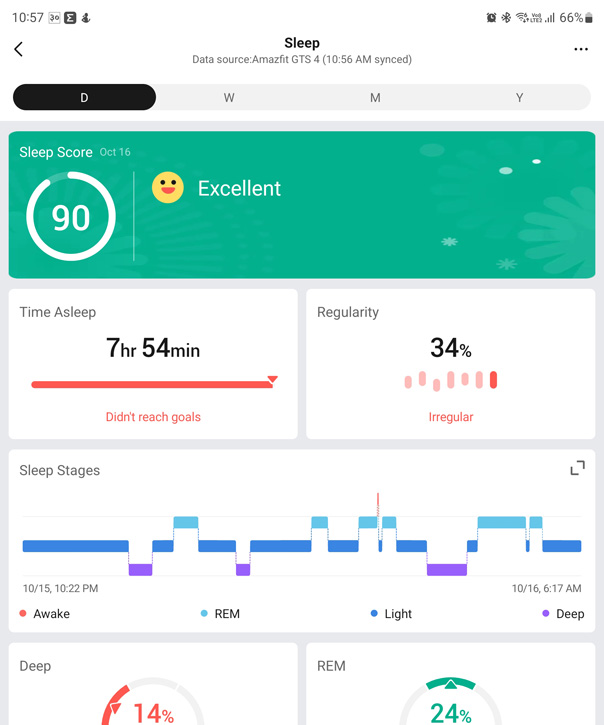
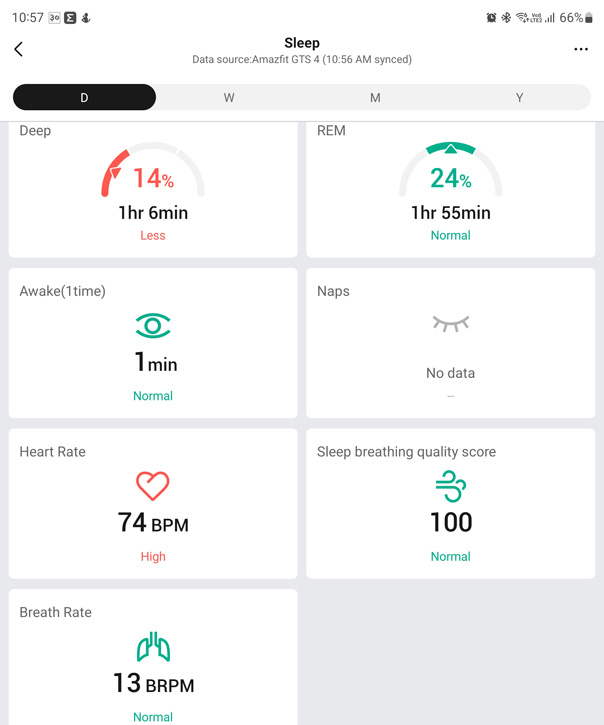

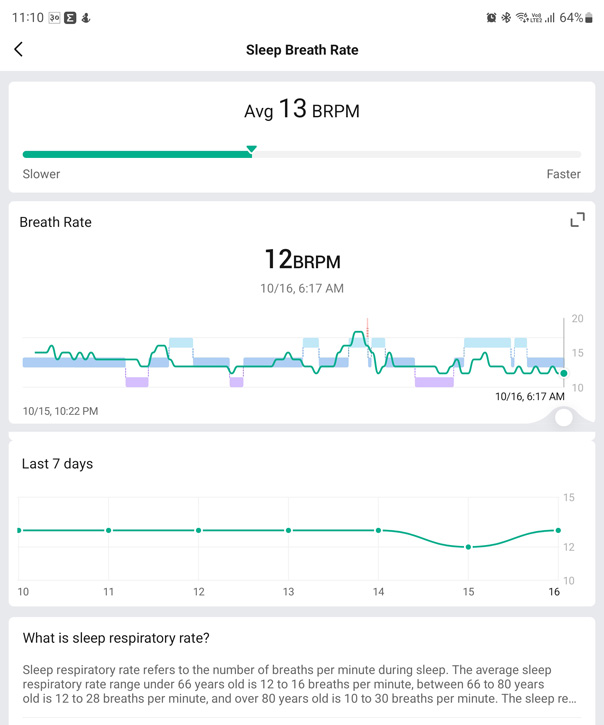
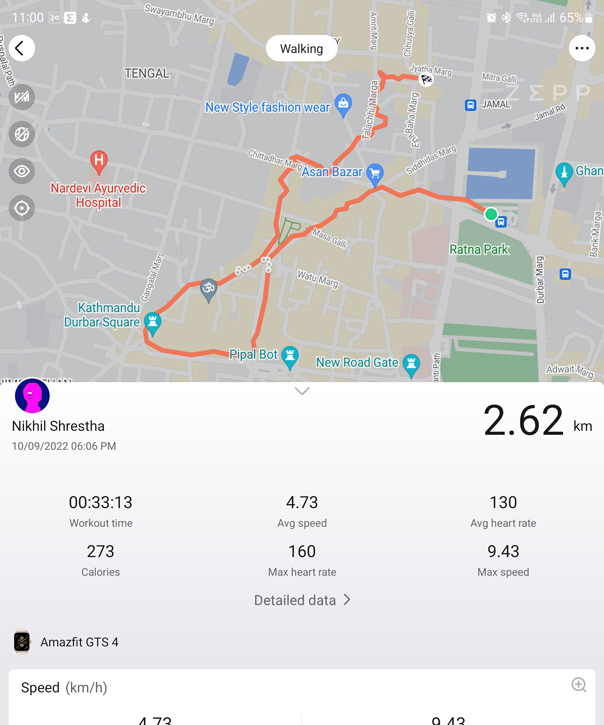
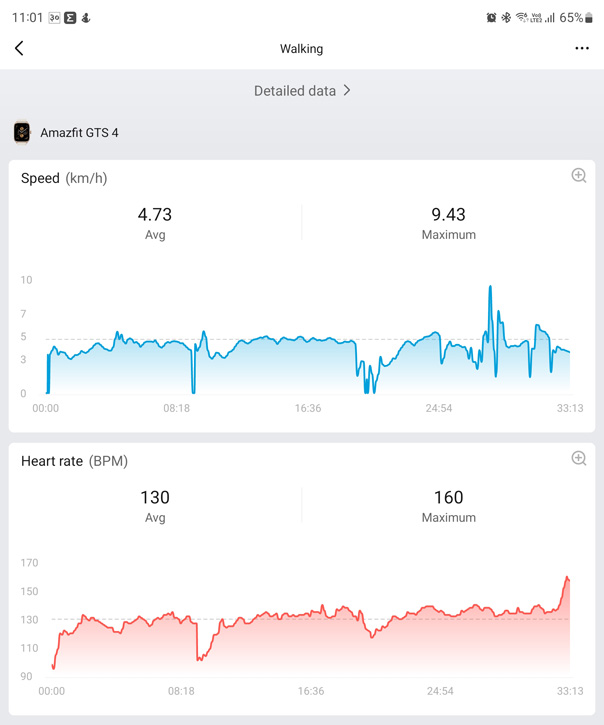
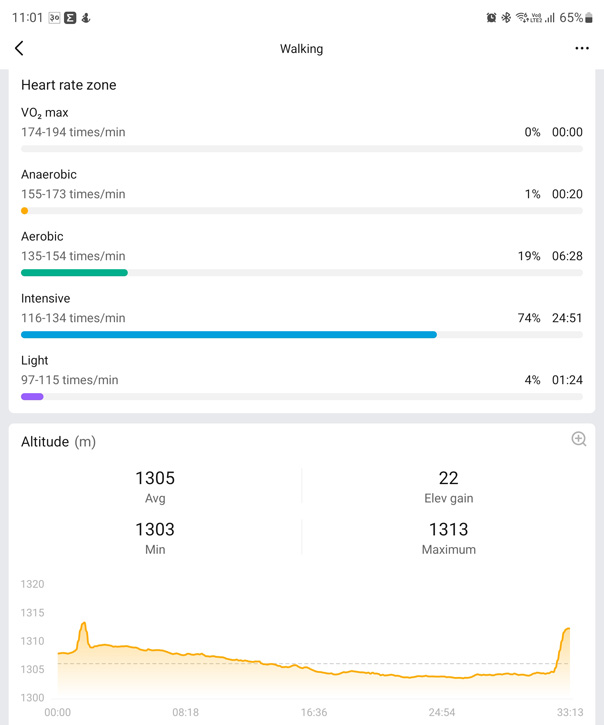

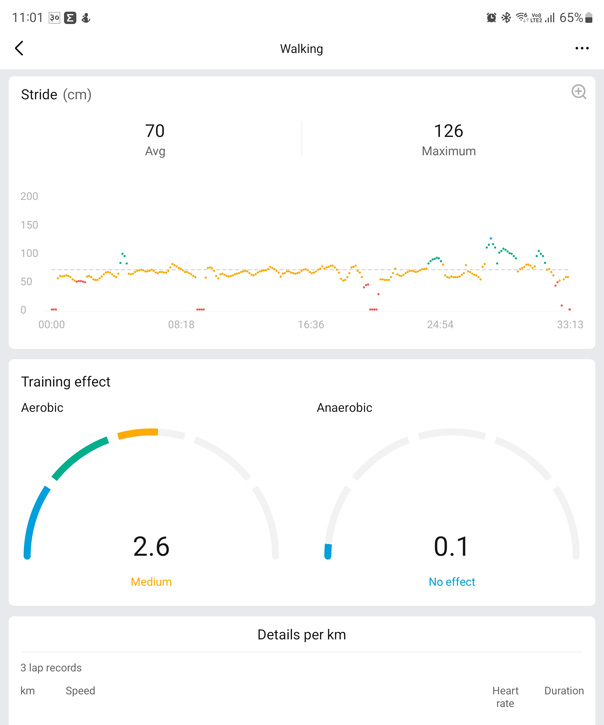
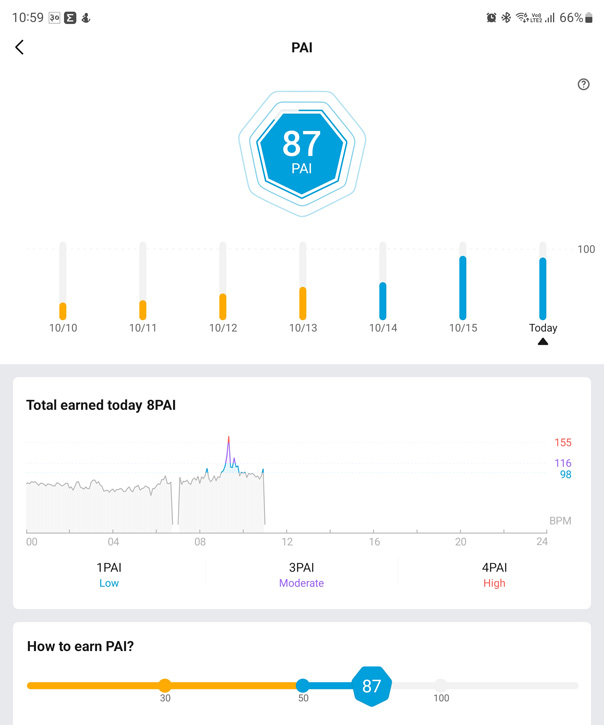
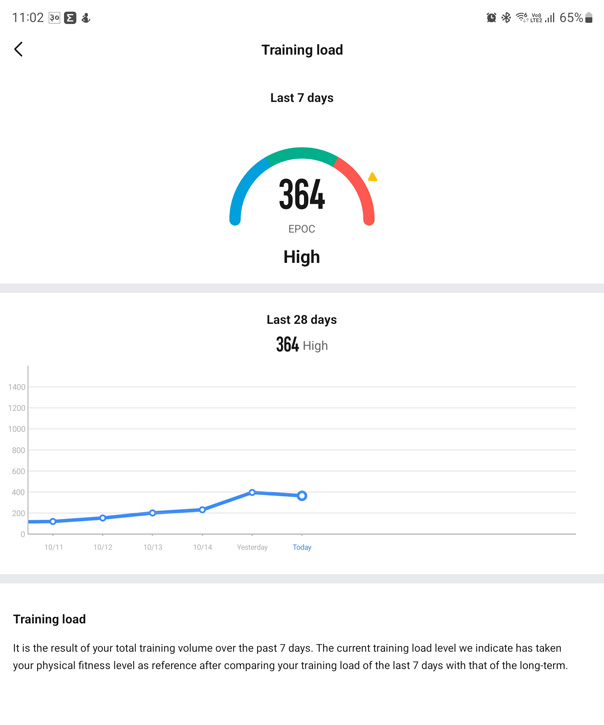
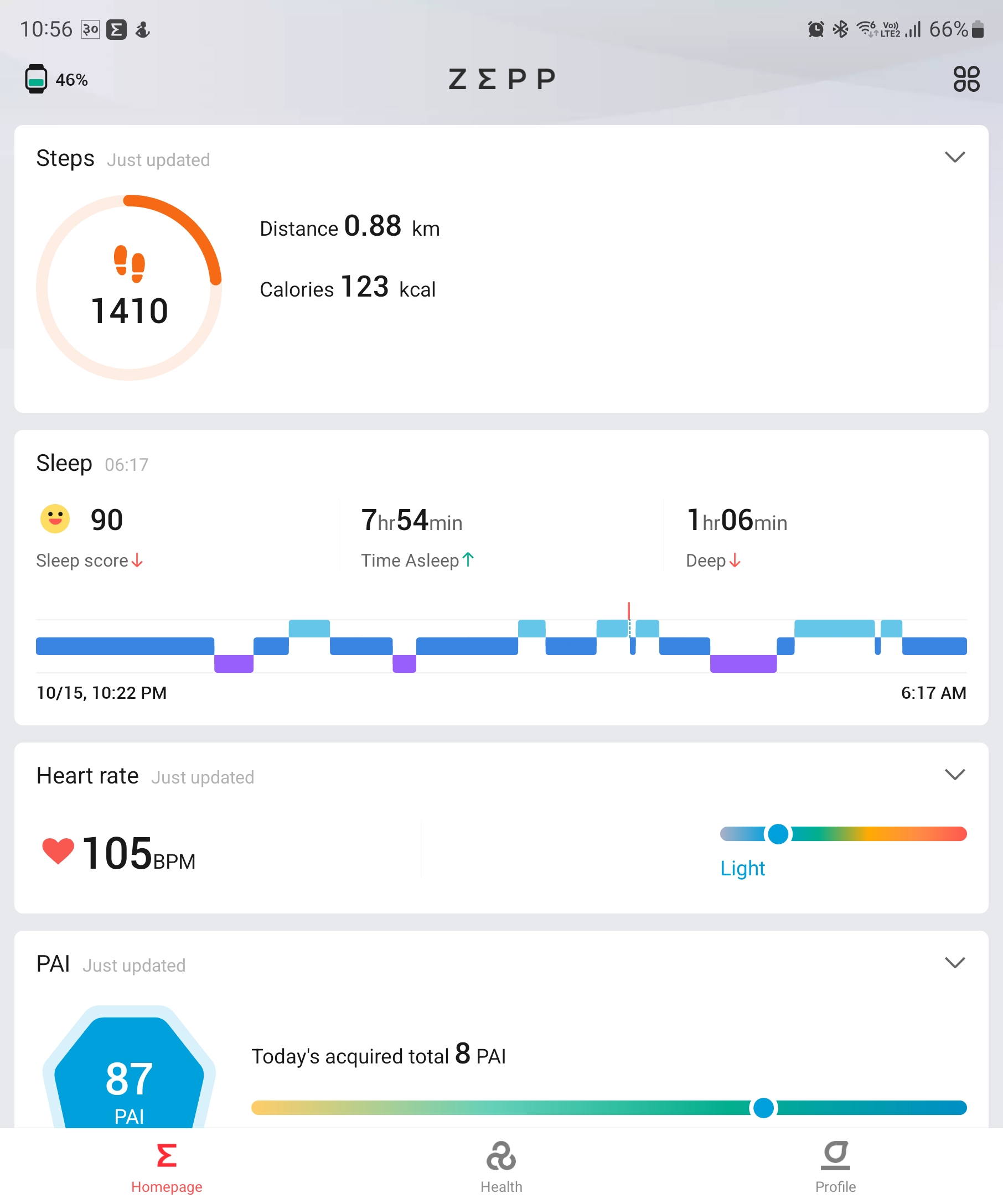

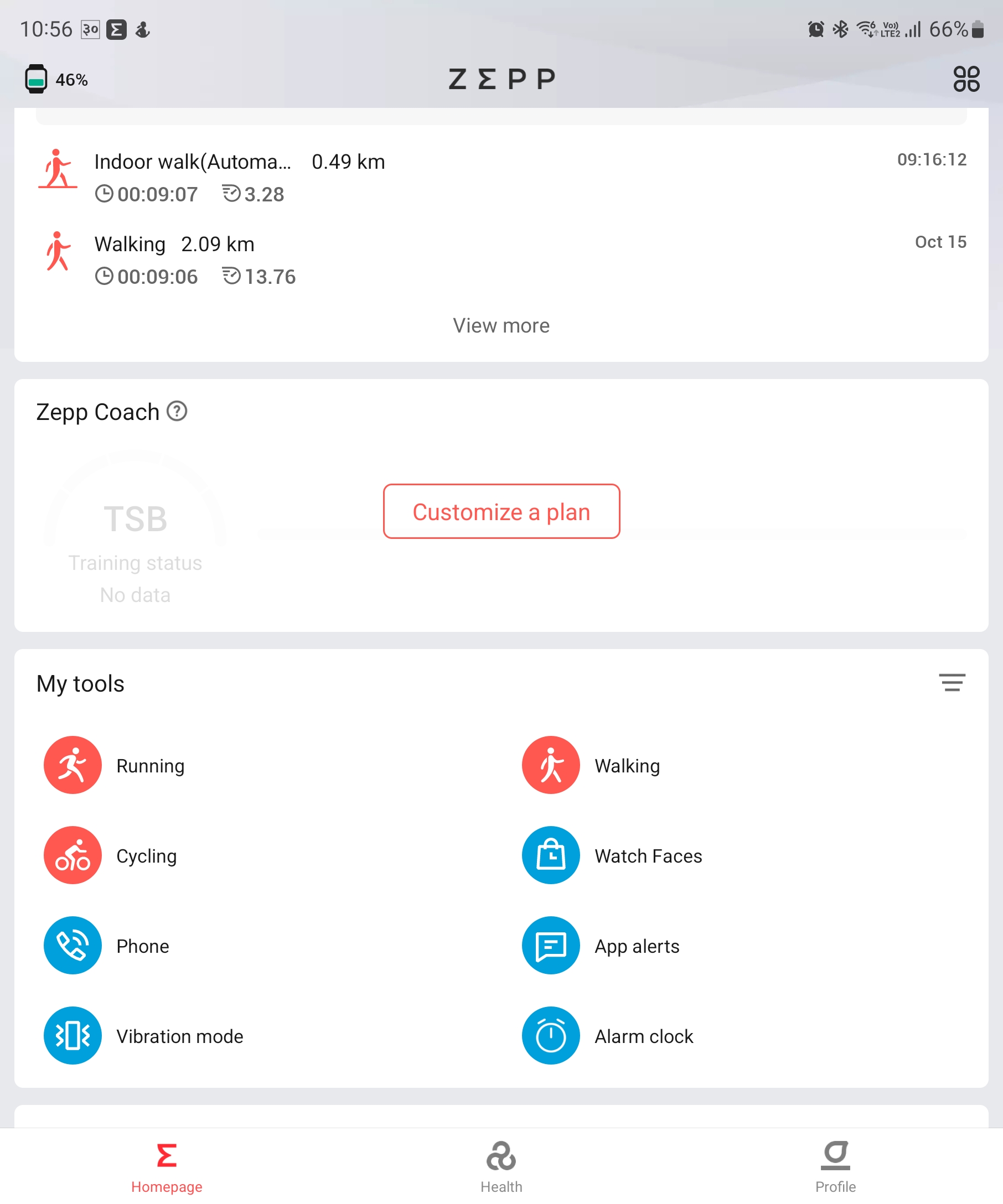
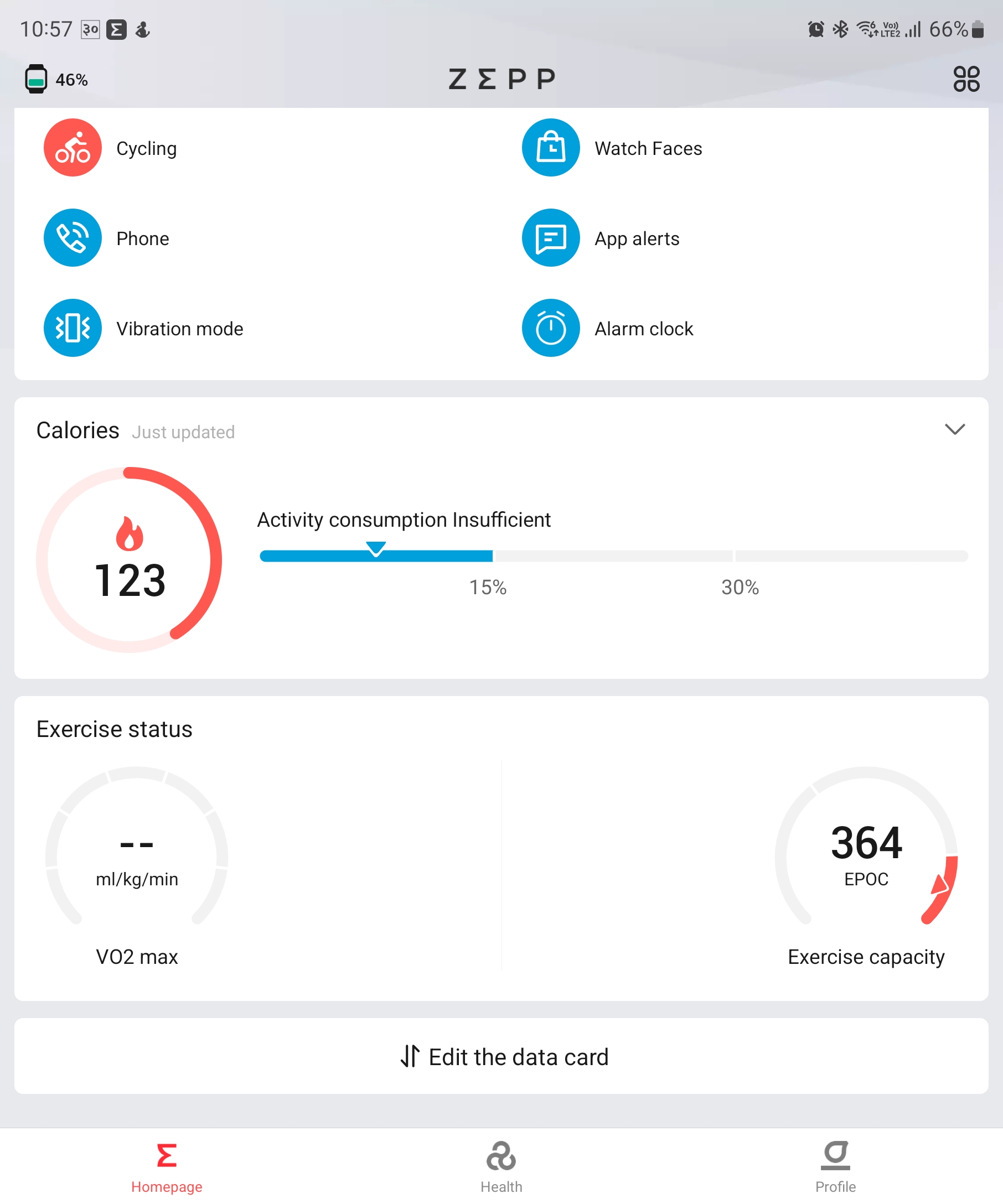
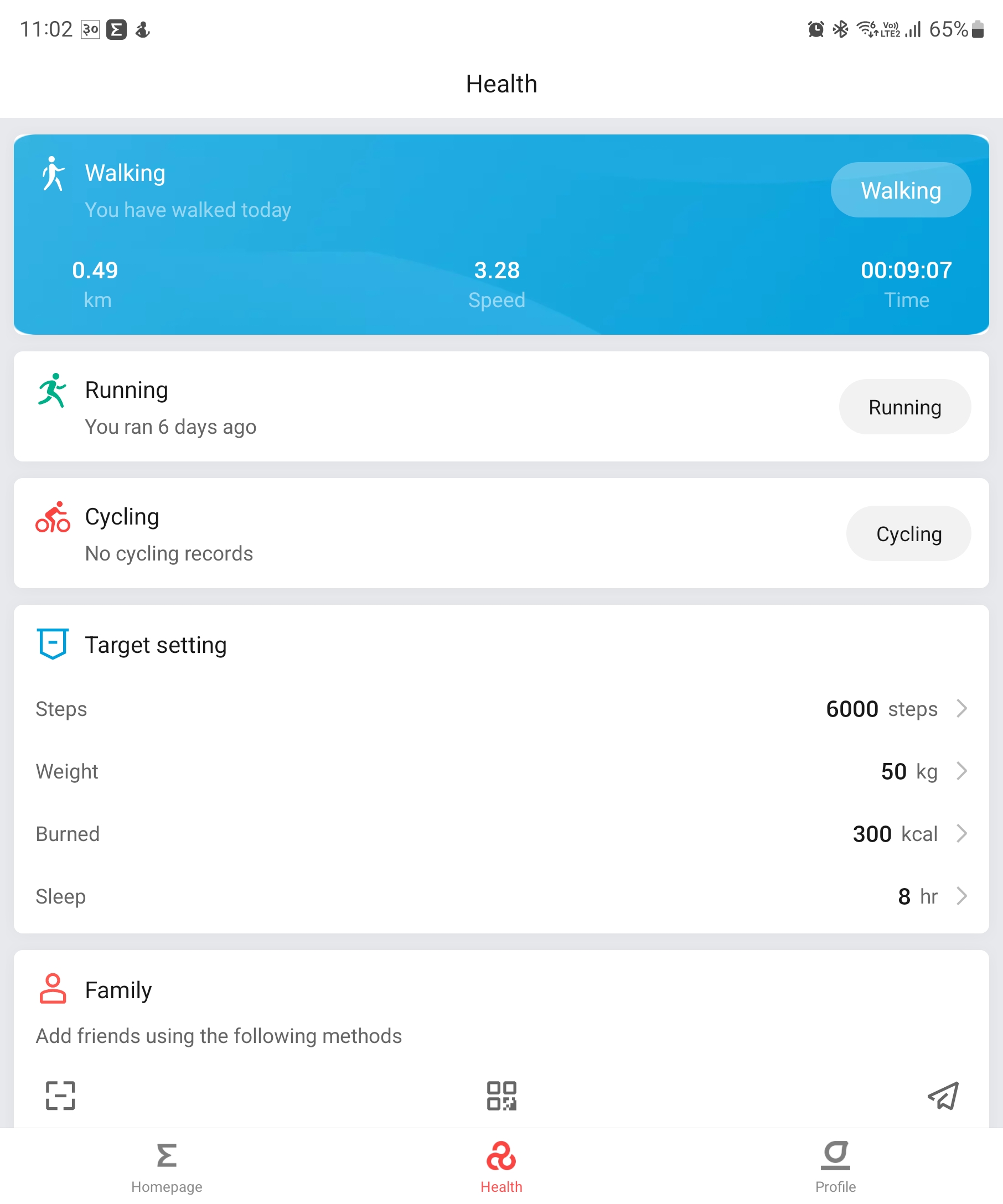
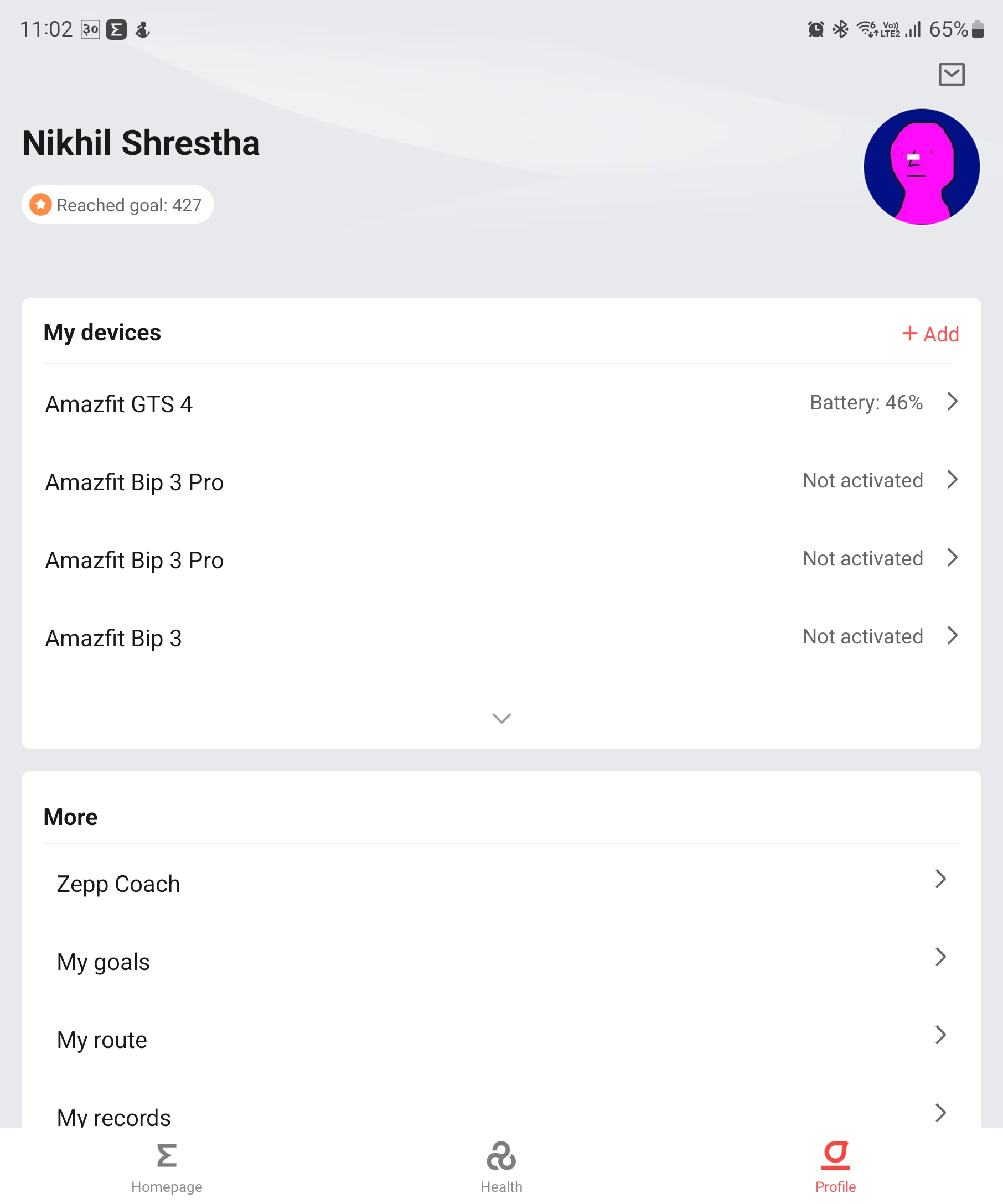
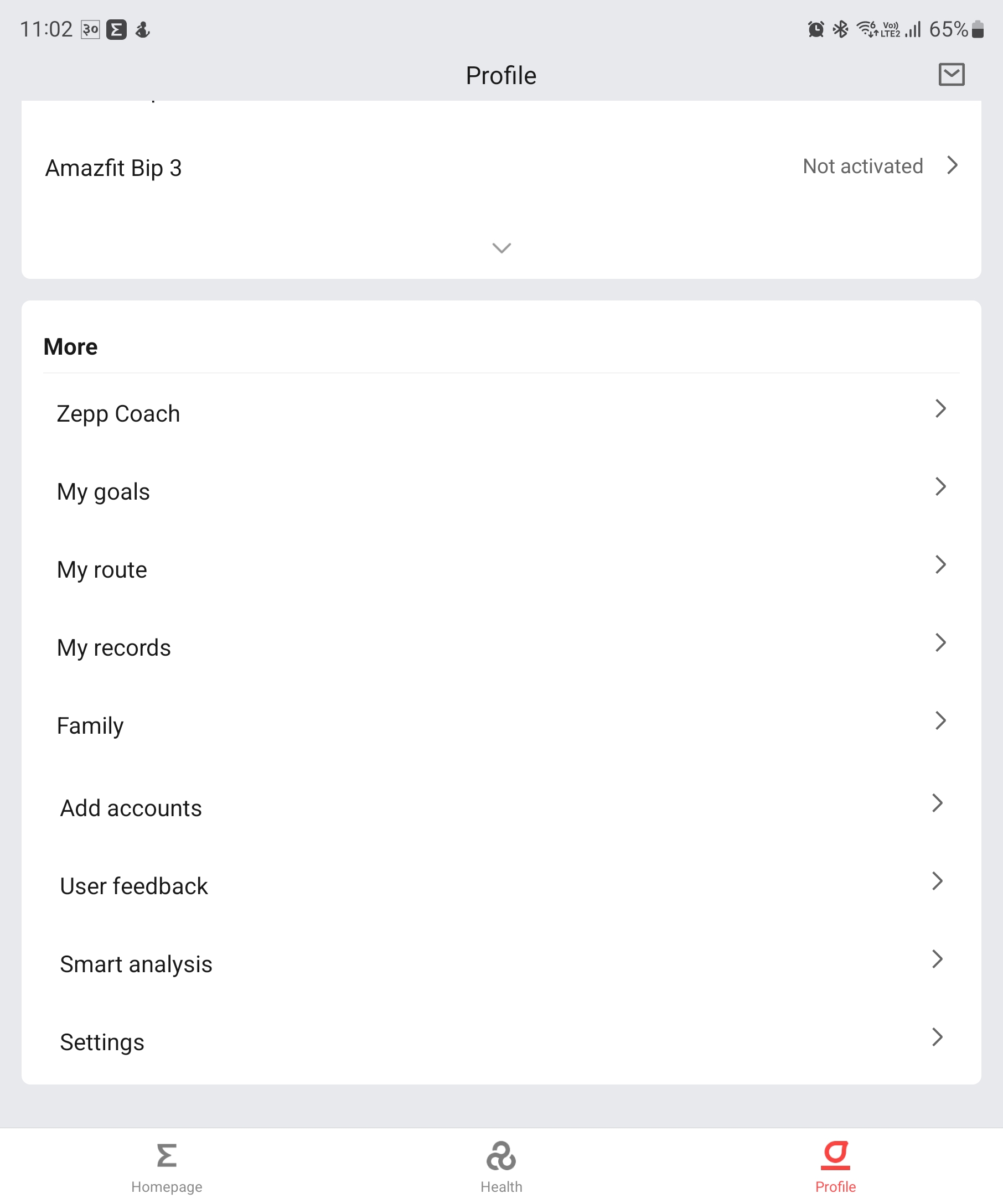
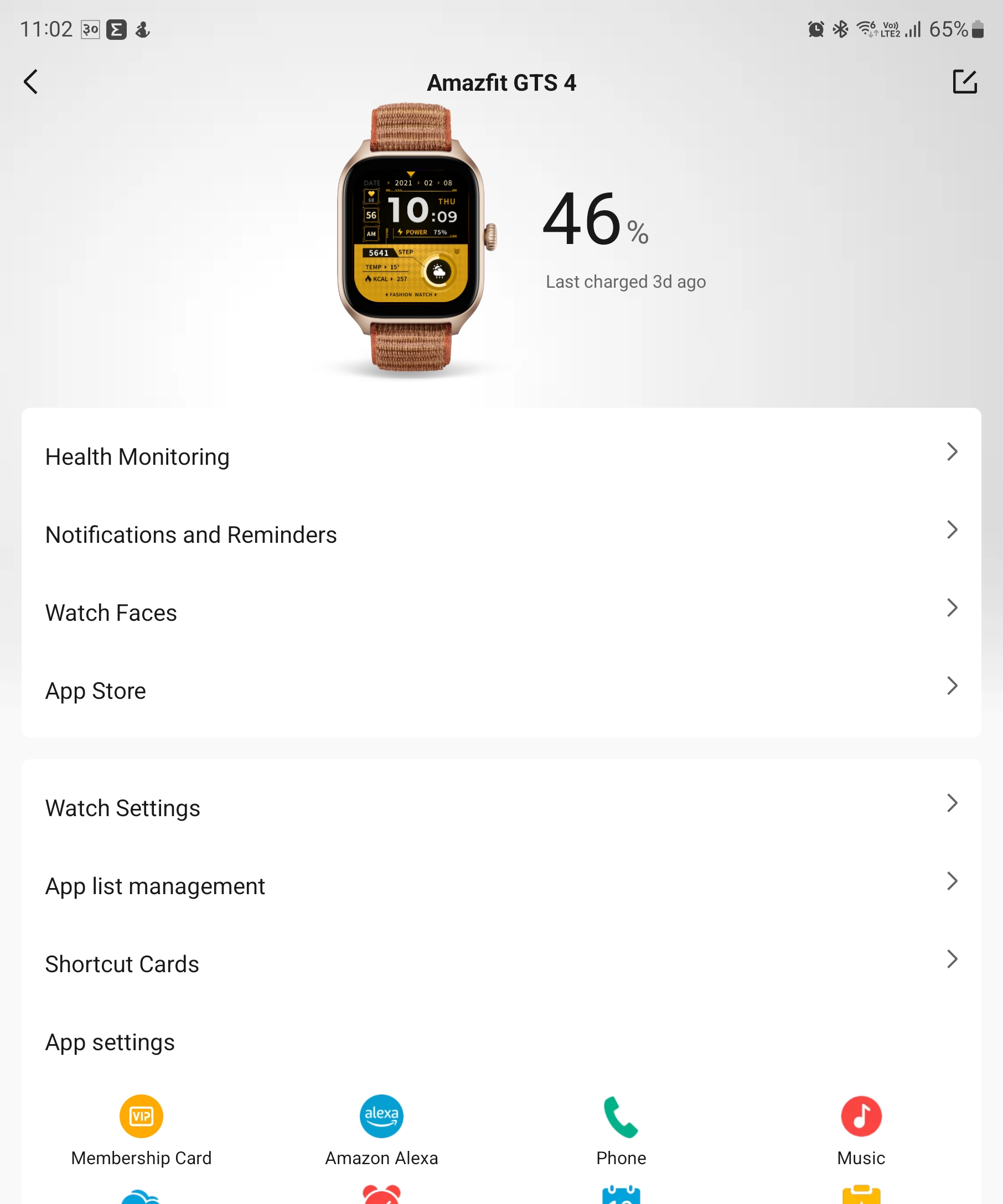

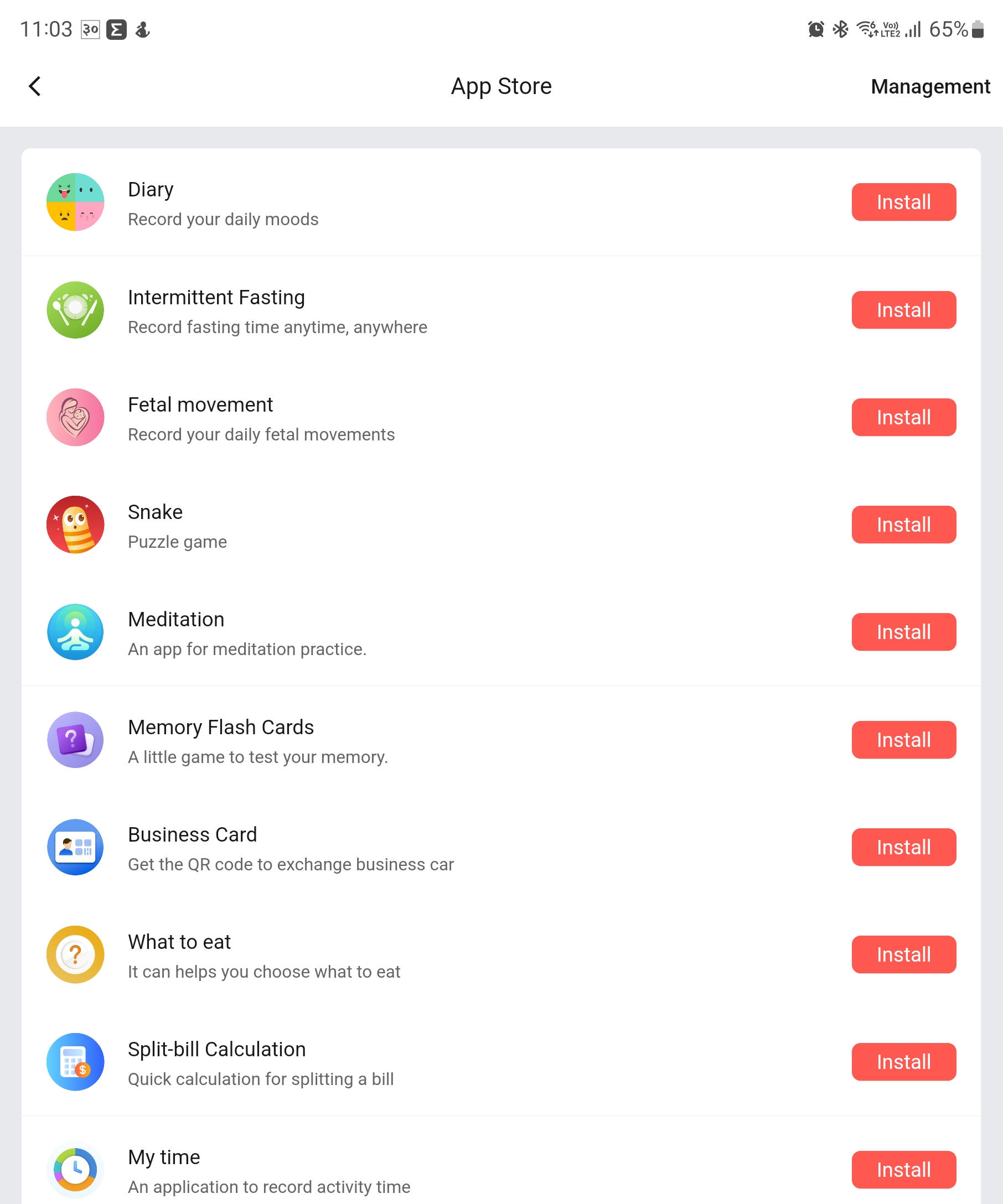
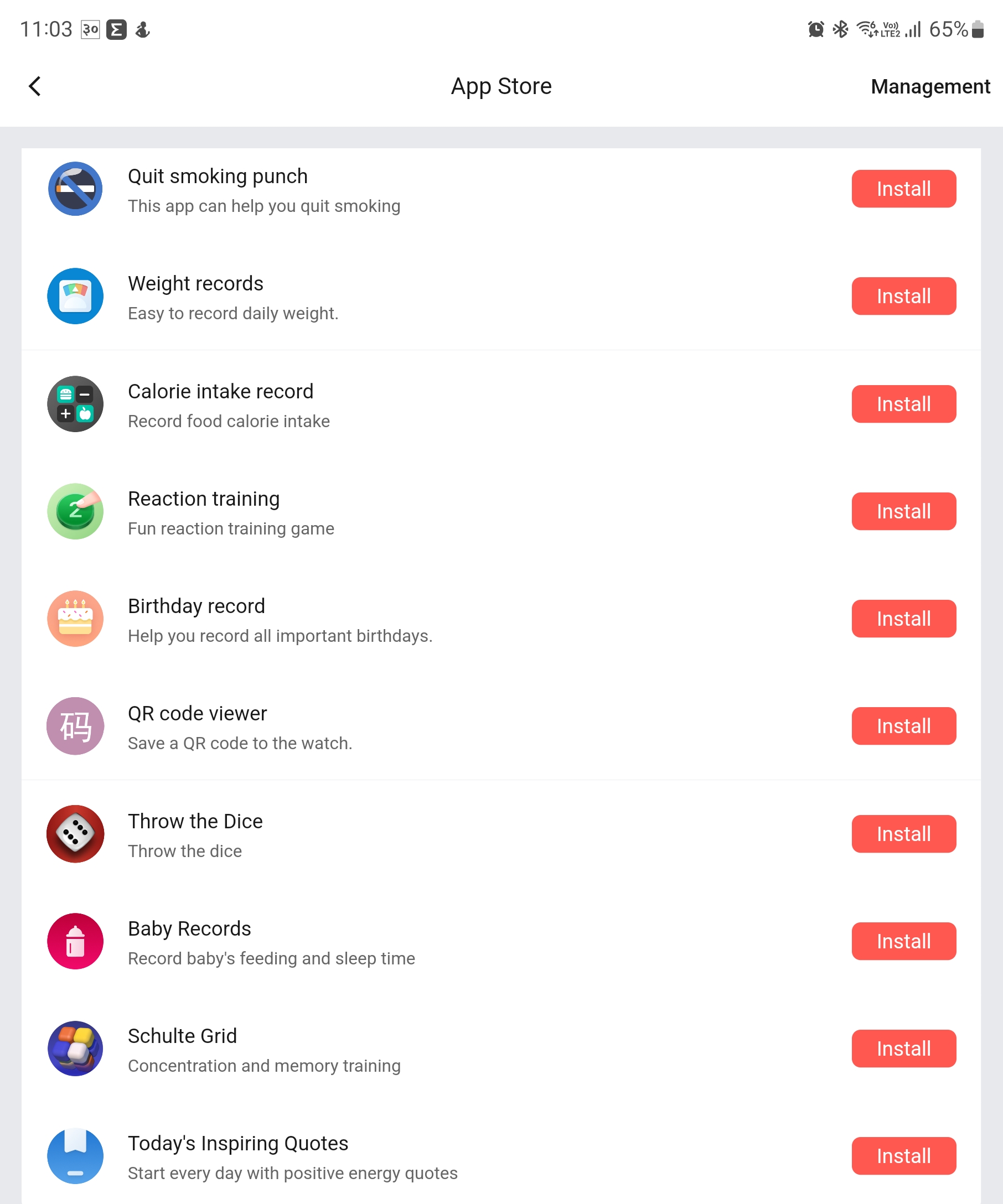
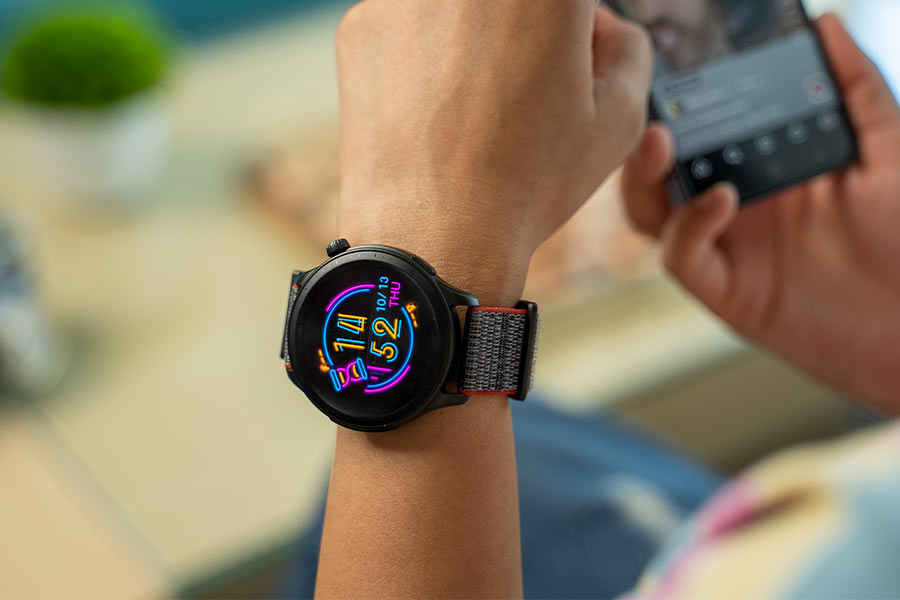
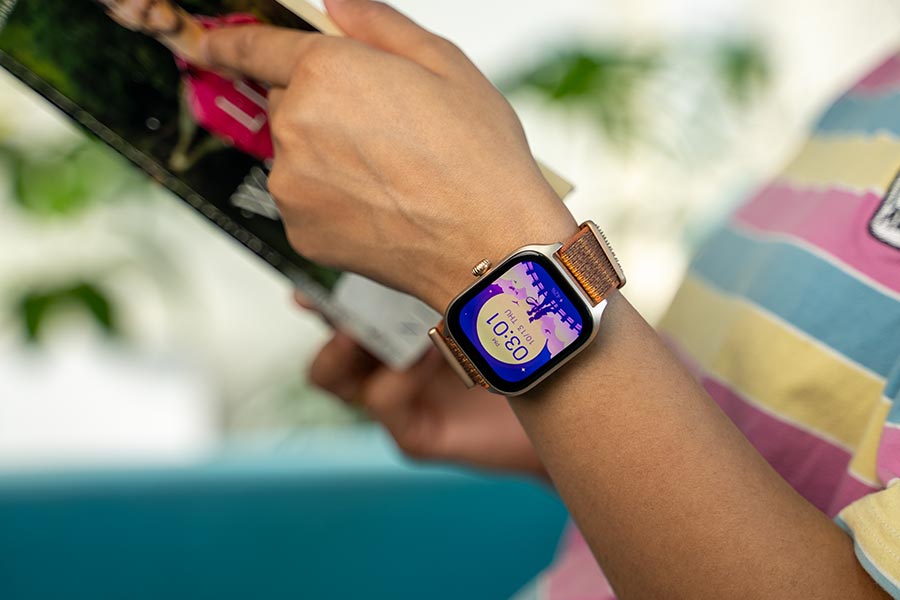

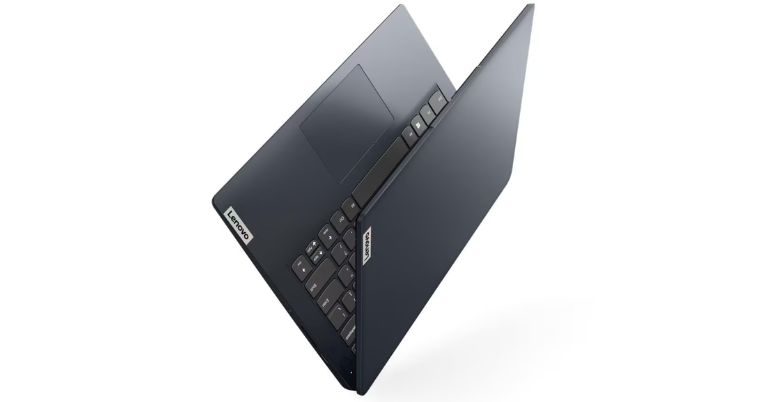
![Best Gaming Laptops in Nepal Under Rs. 250,000 (रु 2.5 Lakhs) [2025] Best Gaming Laptops Under 2.5 lakhs in Nepal [Feb 2025 Update]](https://cdn.gadgetbytenepal.com/wp-content/uploads/2025/02/Best-Gaming-Laptops-Under-2.5-lakhs-in-Nepal-Feb-2025-Update.jpg)
![Best Gaming Laptops in Nepal Under Rs. 120,000 (रु 1.2 Lakhs) [2025] Best Budget Gaming Laptops Under Rs 120000 in Nepal 2025 Update](https://cdn.gadgetbytenepal.com/wp-content/uploads/2025/05/Best-Budget-Gaming-Laptops-Under-Rs-120000-in-Nepal-2024-Update.jpg)
![Best Laptops Under Rs. 80,000 in Nepal [2025] Best Laptops Under 80,000 in Nepal March 2025 Update](https://cdn.gadgetbytenepal.com/wp-content/uploads/2025/03/Best-Laptops-Under-80000-in-Nepal-March-2025-Update.jpg)
![Best Laptops Under Rs. 70,000 in Nepal [2025] Best Laptops Under 70,000 in Nepal March 2025 Update](https://cdn.gadgetbytenepal.com/wp-content/uploads/2025/01/Best-Laptops-Under-70000-in-Nepal-March-2025-Update.jpg)
![Best Mobile Phones Under Rs. 15,000 in Nepal [Updated 2025] Best Phones Under 15000 in Nepal 2024 Budget Smartphones Cheap Affordable](https://cdn.gadgetbytenepal.com/wp-content/uploads/2024/03/Best-Phones-Under-15000-in-Nepal-2024.jpg)
![Best Mobile Phones Under Rs. 20,000 in Nepal [Updated] Best Mobile Phones Under NPR 20000 in Nepal 2023 Updated Samsung Xiaomi Redmi POCO Realme Narzo Benco](https://cdn.gadgetbytenepal.com/wp-content/uploads/2024/01/Best-Phones-Under-20000-in-Nepal-2024.jpg)
![Best Mobile Phones Under Rs. 30,000 in Nepal [Updated 2025] Best Phones Under 30000 in Nepal](https://cdn.gadgetbytenepal.com/wp-content/uploads/2025/01/Best-Phones-Under-30000-in-Nepal.jpg)
![Best Mobile Phones Under Rs. 40,000 in Nepal [Updated 2025] Best Phones Under 40000 in Nepal 2024 Smartphones Mobile Midrange](https://cdn.gadgetbytenepal.com/wp-content/uploads/2024/02/Best-Phones-Under-40000-in-Nepal-2024.jpg)
![Best Mobile Phones Under Rs. 50,000 in Nepal [Updated 2025] Best Phones Under 50000 in Nepal](https://cdn.gadgetbytenepal.com/wp-content/uploads/2025/01/Best-Phones-Under-50000-in-Nepal.jpg)
![Best Flagship Smartphones To Buy In Nepal [Updated] Best flagship phone 2025](https://cdn.gadgetbytenepal.com/wp-content/uploads/2024/07/Best-Flagship-Phones-who-is-it-ft-1.jpg)